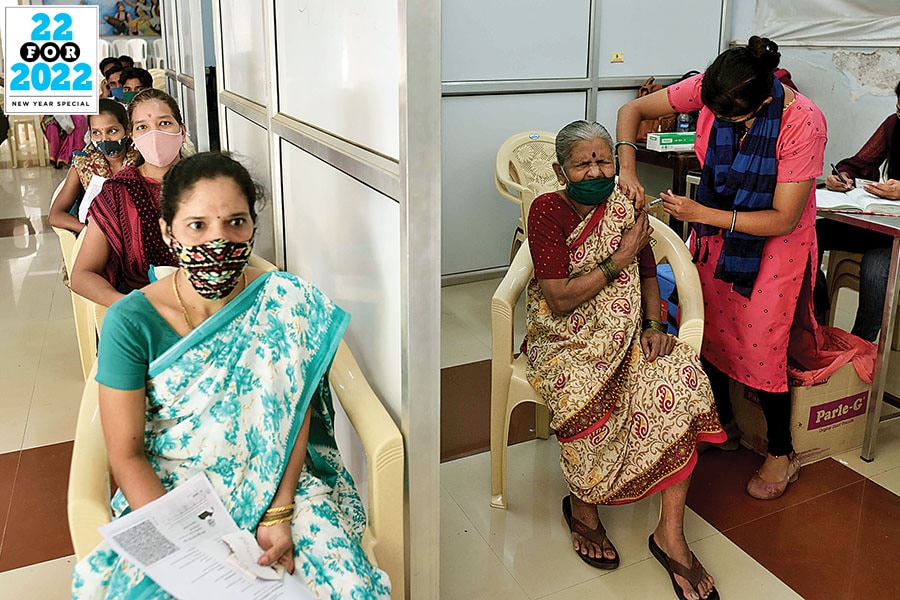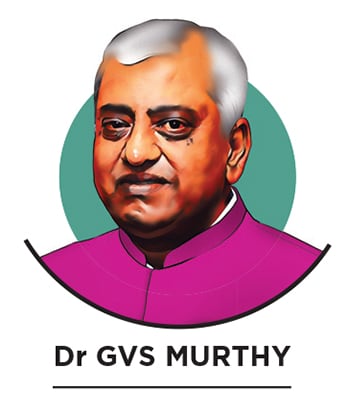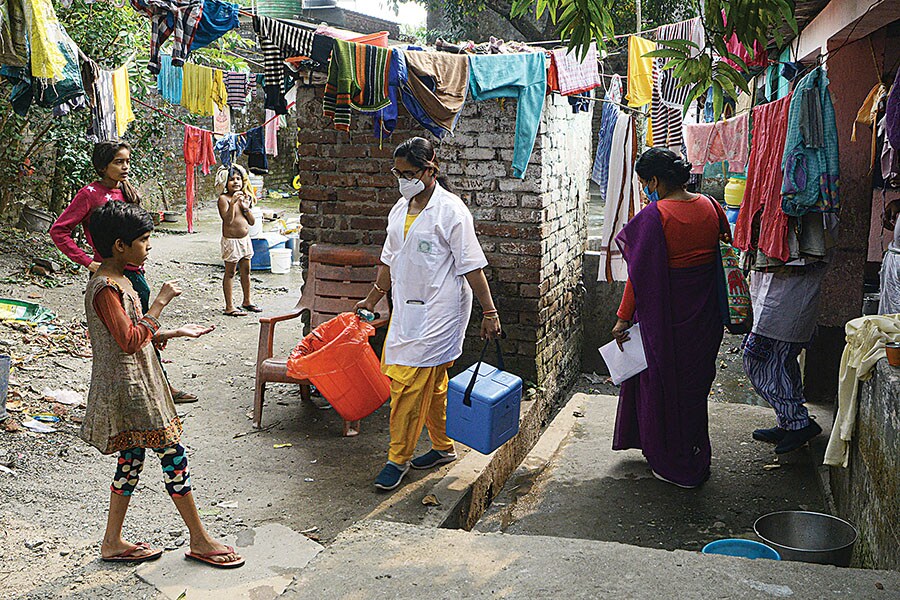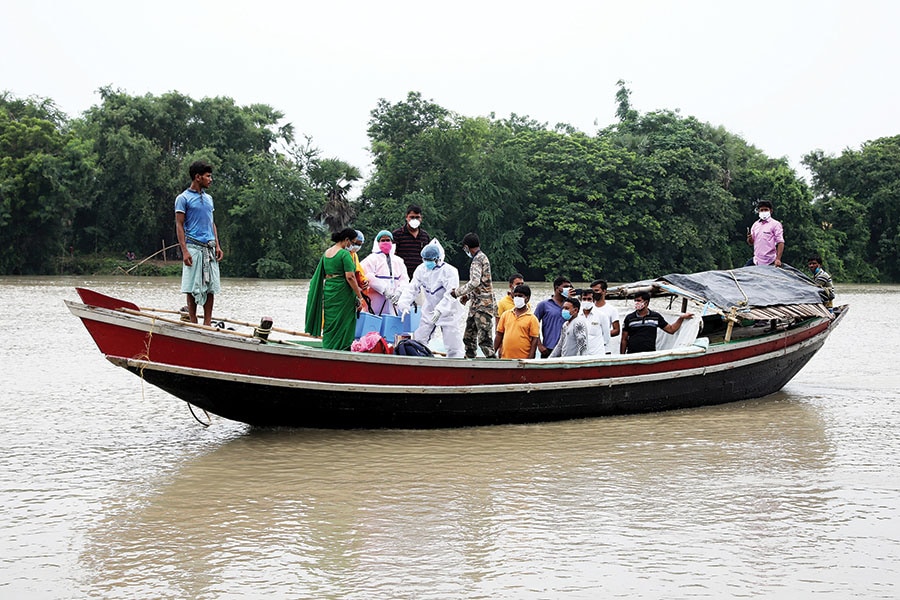
Omicron: India's vaccination plan needs a boost - Dr GVS Murthy
As new variants of Covid-19 emerge, the government must have a clear booster policy that will encourage more global manufacturers to ship vaccines to India, the director of Indian Institute of Public Health-Hyderabad, writes
 India needs 200 million doses per month over the next six months for primary immunisation, and 100 million doses per month of boosters for high-risk groups
India needs 200 million doses per month over the next six months for primary immunisation, and 100 million doses per month of boosters for high-risk groups
Image: Satish Bate/ Hindustan Times/ Gety Images
 India initiated Covid-19 vaccination in January 2021 and initially there were hiccups impacting uptake. This was both due to systemic factors like vaccine shortage and behavioural factors like vaccine hesitancy. The sudden surge of infections from March jolted people out of their slumber and long queues were seen at vaccine centres. However, shortages and few distribution outlets affected delivery. By September, there was a marked improvement in supplies and distribution, and bureaucratic hurdles were removed to augment vaccine coverage.
India initiated Covid-19 vaccination in January 2021 and initially there were hiccups impacting uptake. This was both due to systemic factors like vaccine shortage and behavioural factors like vaccine hesitancy. The sudden surge of infections from March jolted people out of their slumber and long queues were seen at vaccine centres. However, shortages and few distribution outlets affected delivery. By September, there was a marked improvement in supplies and distribution, and bureaucratic hurdles were removed to augment vaccine coverage.
In early May, only 29.1 million people (2.1 percent of the total population) were vaccinated. By August 31, only 36 percent had received at least one dose and 10.7 percent were fully vaccinated, meaning there had been a significant scaling up in the last three months. In the April-June period, vaccine coverage reduced as there was a shortage. As of December 8, 802,894,059 people (58.2 percent) have received at least one dose. However, only 34.8 percent were fully vaccinated.
Compared to many high income countries, vaccine hesitancy has been lower in India. With a vaccine acceptance of around 75 percent, India has done well in allaying people’s fears and apprehensions. Vaccine production has been ramped up significantly and the country now has the capacity to deliver three billion doses annually.
Vaccines have revolutionised the fight against Covid the world over. Though the outcome measure during the validation phase for all vaccines was the potential to reduce death and hospitalisation, in actual effect, vaccines have also been effective in reducing infection among those fully vaccinated. Studies from India have shown that vaccine effectiveness in preventing infections was 52 percent after a single dose and 83 percent after two doses among those aged 45 or older. This dose-dependent protection, which starts around two weeks after the first dose, against infection, hospitalisation and admission to ICUs and reduced mortality has been the game-changer.
(This story appears in the 30 November, -0001 issue of Forbes India. To visit our Archives, click here.)




 With variants like Omicron reinfecting and affecting the fully vaccinated, overcrowding at vaccination sites can be avoided by administering vaccines at the household level
With variants like Omicron reinfecting and affecting the fully vaccinated, overcrowding at vaccination sites can be avoided by administering vaccines at the household level



